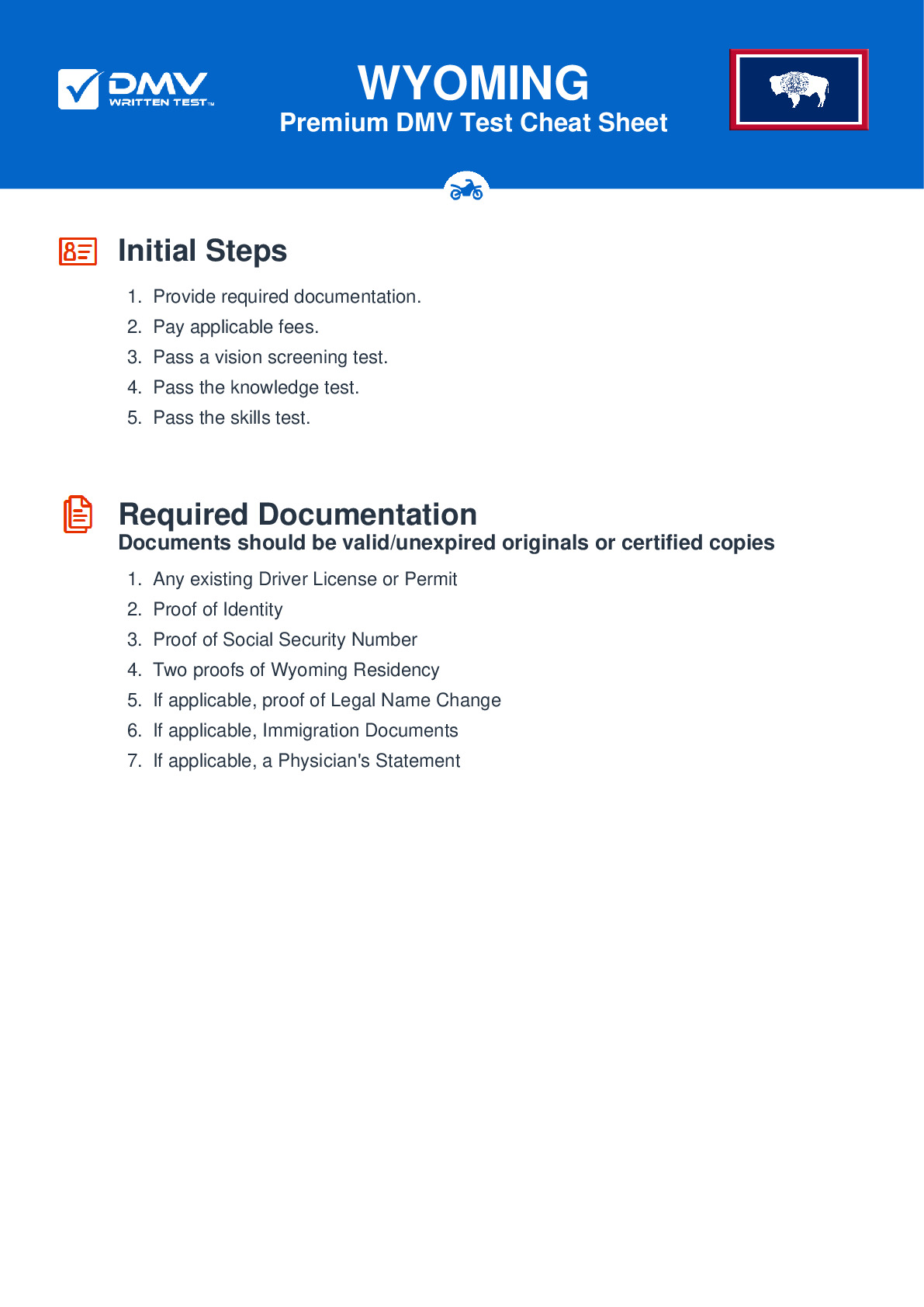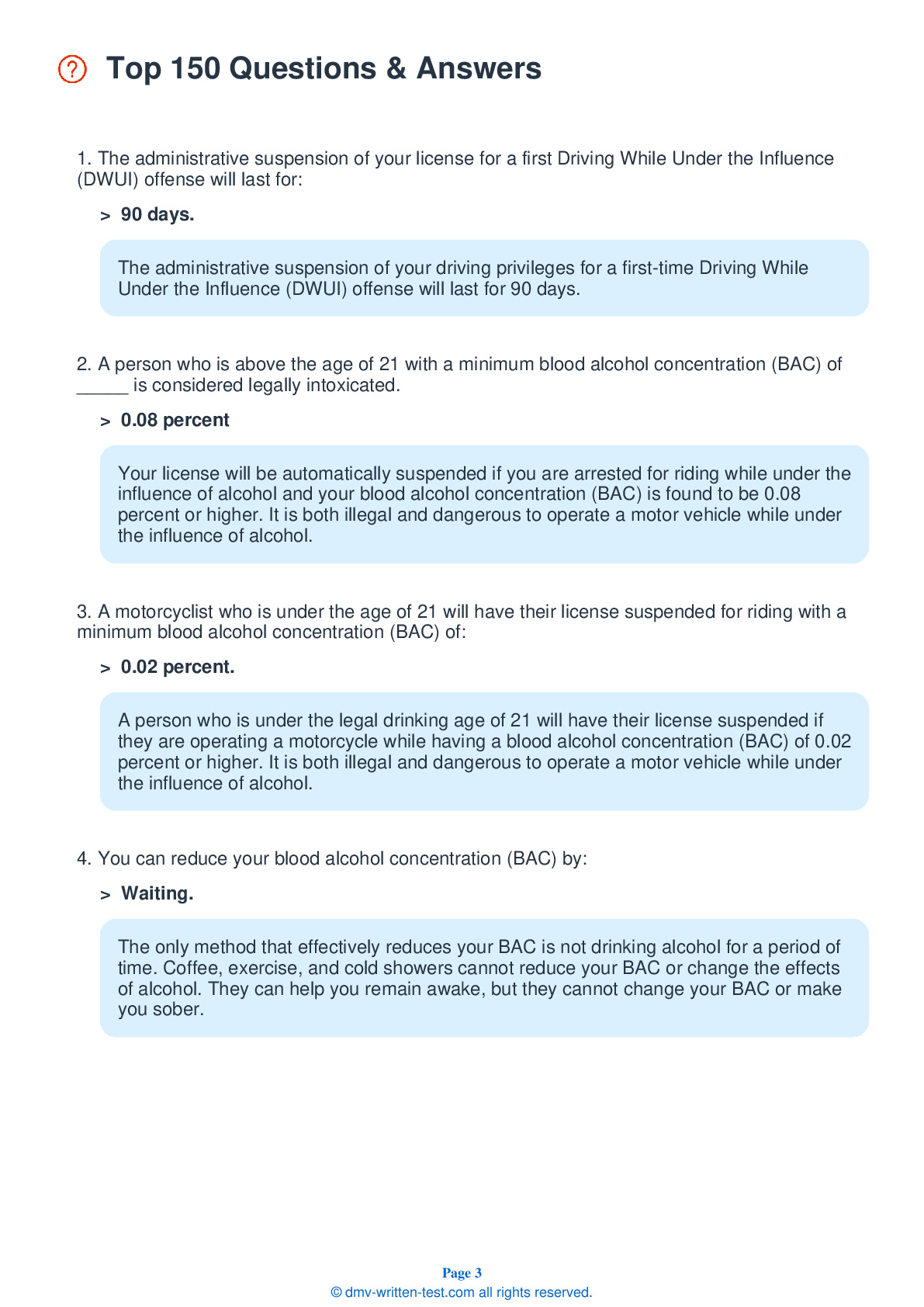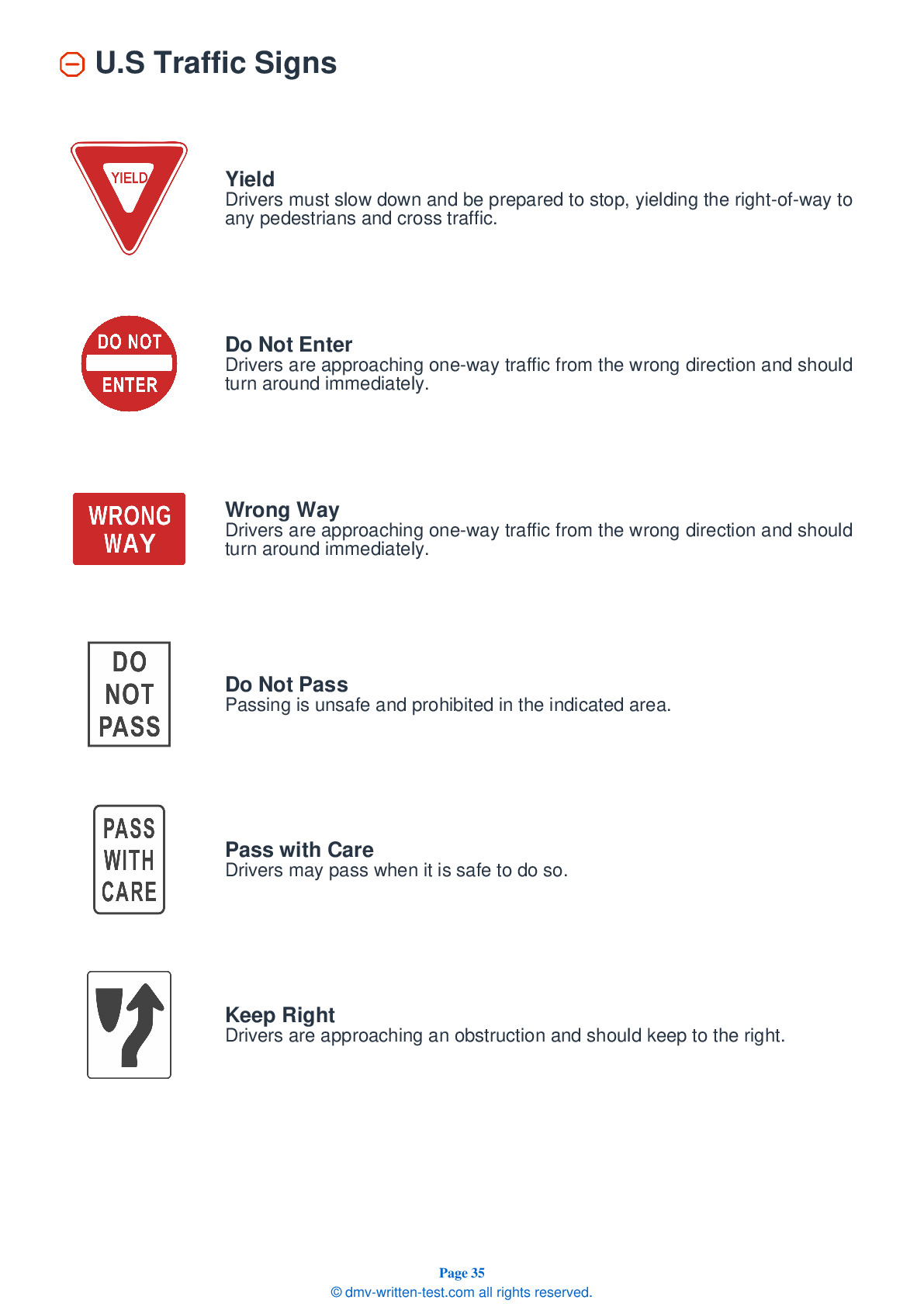2025 Wyoming Motorcycle Permit Test 8
The following questions are from real DMV written motorcycle permit tests. These are some of the actual permit questions you will face in Wyoming when getting your motorcycle learners permit. Each motorcycle theory practice test question has three answer choices. Select one answer for each question and select "grade this section." You can find this button at the bottom of the drivers license quiz. For a complete list of questions and answers for Wyoming please visit https://cheat-sheets.dmv-written-test.com/en/wyoming/motorcycle.
Number of Tests
Number of Question
Passing Score
13. A flat front tire is especially dangerous because:
Explanation
A flat front tire is especially dangerous because it interferes with your ability to steer, which is essential to keeping your balance. If steering begins to feel heavy, it is possible that you have a flat front tire.
14. A good way to handle a tailgater is to:
Explanation
If you can do so safely, change lanes and let the tailgater pass. Speeding up may only result in them continuing to tailgate you at a higher speed, increasing the danger.
15. As you approach a blind intersection, you should:
Explanation
When approaching a blind intersection, move into the portion of the lane that will bring you into any other driver's field of vision at the earliest possible moment.
16. The faster you drink alcohol:
Explanation
The faster you drink, the faster the alcohol will accumulate in your body. Alcohol leaves a person's system at an average of one drink per hour. If you consume more than one drink in an hour, you will still have alcohol in your body after one hour has passed.
17. To execute a turn safely, a motorcycle rider should always:
Explanation
When turning, you should always lean in the direction of the turn. Slow down before entering the turn.
18. When you must brake and swerve to avoid a hazard, you should:
Explanation




